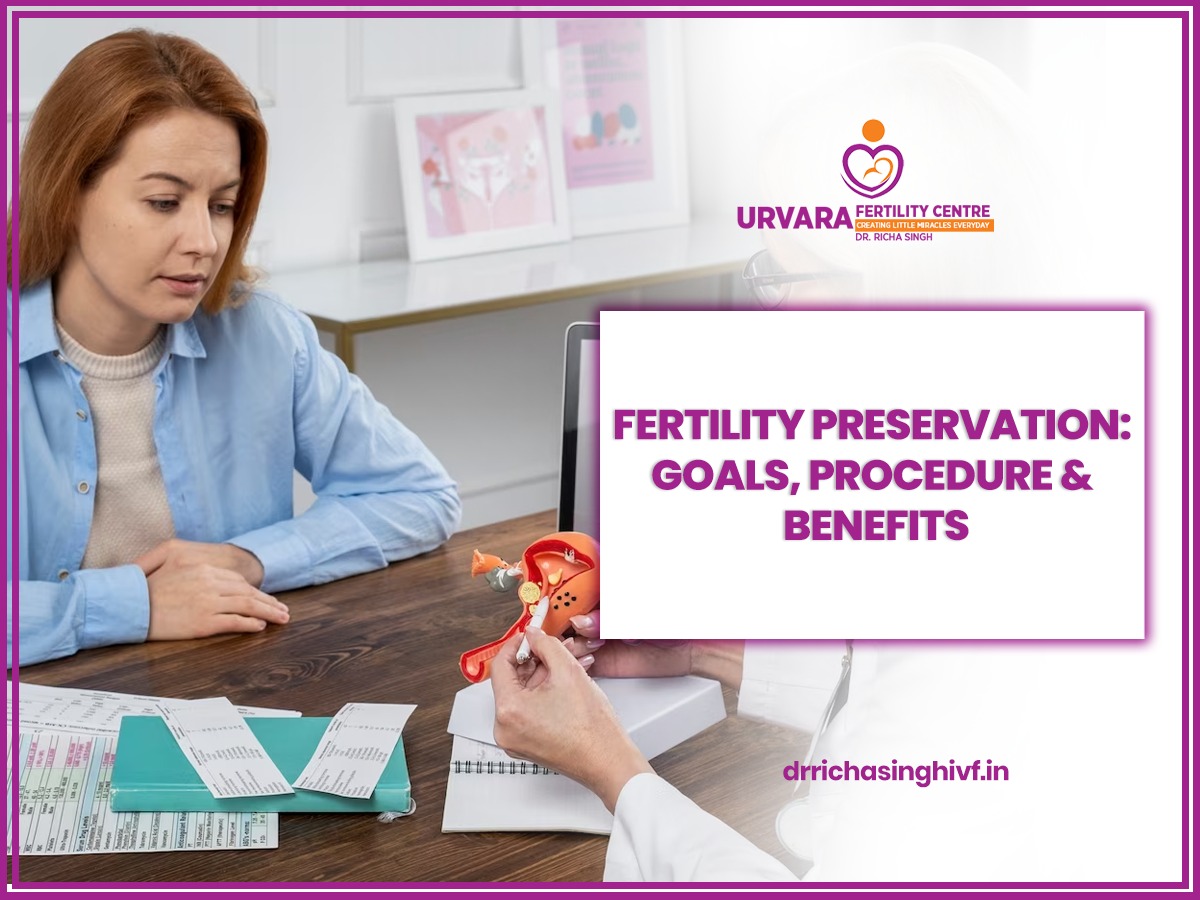Fertility Preservation: Goals, Procedure & Benefits
Fertility preservation is not just about preserving your eggs or sperm, it’s about preserving dreams and the possibility of a family. Fertility preservation makes your dream possible to have a baby in the future. Fertility preservation is a gift for couples who are facing any health condition or disease, or couples who wish to delay having children for personal reasons. Let’s understand what the goals for fertility preservation are, the procedure of fertility preservation, and the benefits of fertility preservation.
What are the Goals of Fertility Preservation?
Fertility preservation plays a very important role in safeguarding cancer survivors.
Chemotherapy during cancer treatment is toxic to gametes and many times render the
couple infertile. So, techniques like egg preservation, sperm preservation, or other
methods can be life-changing for most couples facing such situations.
Another goal is preserving fertility for couples who want to delay having their children
including desire to reach a certain career goal or education. Couples facing diseases
like rheumatoid arthritis, or any other autoimmune disease may face fertility issues,
and through fertility preservation, they can conceive a baby in the future.
Reproductive health issues like uterine fibroids, and endometriosis can make it more
difficult to conceive, and timely fertility preservation helps in this condition too.
Couples who wish to delay having a baby until their 30s or 40s may choose to preserve
their fertility because most research shows aging affects fertility and decreases your
chances of conception.
Still, through fertility preservations, one can conceive a baby in the future. You can
consult with a Fertility Specialist in Lucknow
who is deft with such kind of procedures
and help you to understand fertility preservation in detail. This specialist will let
you know about the process and other aspect of this technique.
What is the Procedure of Fertility Preservation?
Fertility preservation is of two types such as removing and freezing eggs, sperm, and tissues for the future and the other type is minimizing the impact of cancer treatment on the reproductive tissues.
Process of Egg Freezing or Embryo Freezing
The preservation can be used by unmarried females wanting to preserve fertility. Egg preservation is also known as oocyte cryopreservation. This process includes a few steps. The initial step is ovarian stimulation which usually takes 10-12 days and then egg removal is performed under anesthesia by the experts under USG guidance. With the help of a needle through the USG probe eggs are retrieved from the ovary. After collecting the eggs, they are checked for quality and good quality mature oocytes are frozen. This is a painless process but during this process, some women may feel discomfort or bloating temporarily and does not cause any changes in the body or weight gain.
Process of Sperm Freezing
This is not a surgical process. A male who wants to preserve his sperm has to masturbate and ejaculate semen into a container and then embryologists freeze and stores that semen. Sperm freezing is also called sperm cryopreservation. It can be frozen upto 10 years.
Process for Embryo Freezing
In this ovary are stimulated and eggs are retrieved and then partner’s sperm is used to fertilize and create the embryos which are frozen for future use. This can be done by married couples who want to delay their pregnancy or one suffering from cancer or medical disease and want to preserve their fertility.
Process of Testicular Tissue Freezing
In the testicular tissue freezing process, your surgeon will collect a testicular tissue and with the help of a scalpel tissue is removed or a needle takes up the sample of that tissue for preservation.
Process of Ovarian Tissue Freezing
This process requires anesthesia and it includes a few steps. The surgeon makes up to
four small incisions in your abdomen and then inserts a thin scope to look inside the
abdomen. With the help of small equipment, the ovarian tissue is collected, then the
equipment is removed and incisions are been closed. It is necessary to take the advice
of your surgeon related to bed rest and medications.
Other than these procedures there are several processes of fertility preservation.
Key Steps of Fertility Preservation
It is necessary to consult with your fertility specialist and take their advice for making your parenthood journey better. Under the guidance of the top IVF specialist in Lucknow , you can understand the approach to fertility preservation and understand the impact of hormonal therapy, and the steps of the procedure to make an informed decision.
Benefits of Fertility Preservation
There are multiple benefits of fertility preservation. With the help of fertility preservation couples get a chance to do family planning and can delay their parenthood without worrying about the biological clock. Cancer patients get confidence and hope who undergo fertility preservation. This also enhances their quality of life. It also gives chance to couples to work on their relationship and strengthen their bond so that they will be emotionally prepared for parenthood.
Conclusion
Fertility preservation is a gift for couples who are facing any health condition or disease, who want to delay their parenthood, or for any other reason. Techniques like egg preservation, sperm preservation, or other methods can be life-changing for such couples. With the help of fertility preservation, you can preserve your fertility for future pregnancy.
